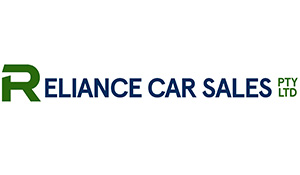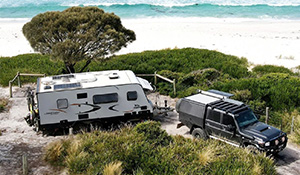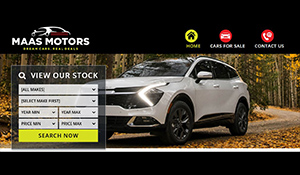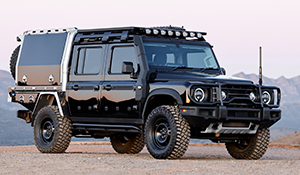Toyota and HiLux lead Australia’s car market in 2022
Despite ongoing supply chain challenges, Australia’s new car market is showing signs of recovery, with sales for 2022 of 1,081,429. The result exceeded the COVID-impacted years of 2020 and 2021, which saw sales of 1,049,831 and 916,968, respectively, and the local market’s best annual result since 2018.

As most new car buyers would have experienced last year, demand regularly exceeded supply, with the lag between ordering and delivery due to multiple factors, including shipping delays, wide-scale microprocessor shortages and the ongoing COVID recovery.
In releasing 2022’s new car sales, the Federal Chamber of Automotive Industries (FCAI) described the past year as one of “resilience and recovery,” but is looking ahead to 2023.

“2023 is shaping up as one of the most significant in recent history, particularly in terms of the development of policies that set the direction for the future decarbonisation of the light vehicle fleet,” said FCAI Chief Executive, Tony Weber.
“As the peak representative body for vehicle distributors, FCAI has advocated for a fuel efficiency standard for many years. We are optimistic that the Federal Government will take action in 2023 and introduce a standard that achieves the policy outcomes that lead to emission reductions while enabling Australians to drive the vehicles that they need and want.”

Market Segments
Across the four main market segments, SUVs were the favourite amongst new car buyers in 2022, with 574,632 sales accounting for 53.1 per cent of the total market, while the light commercial segment (that includes the likes of the Ranger, Triton, D-Max, HiLux, Navara, T60, etc.), took a 23.69 market share with 256,382 sales.

The passenger car segment was 18.7 per cent, while heavy commercial vehicles accounted for 4.51 per cent of the market.
Compared to 2021, SUV market share increased by 2.5 per cent, but the Light Commercial sector fell marginally. The bigger drop was in the passenger car sector, which held a 21.1 per cent share in 2021.

Toyota is Tops
Toyota has been Australia’s market-leading brand since 2003 and that unbroken run didn’t change in 2022, with the Japanese carmaker accounting for 21.4 per cent of the nation’s new car sales last year, thanks to top-selling models in several market segments.
"We recognise that Toyota is extremely fortunate that well-recognised nameplates like HiLux, Corolla and LandCruiser - all of which have more than half a century of heritage and success in Australia - continue to deliver on the unique motoring needs and requirements of diverse buyers across the country," said Toyota Vice President Sales, Marketing and Franchise Operations Sean Hanley.

Toyota’s total sales of 231,050 was more than double that of second-placed Mazda (95,178), with Kia (78,330) leapfrogging sister brand Hyundai to take the final spot on the podium.
Despite selling more cars last year (73,345) than they did in 2021, Hyundai was only the fifth best brand in 2022, outsold by Mitsubishi with 76,991 sales.

Completing the Brand Top 10 was Ford (66,628), MG (49,582), Subaru (36,036), Isuzu Ute (35,323) and VW (30,946).
Just outside the Top 10 was Nissan (26,941), who saw sales plummet by more than 35 per cent last year, while GWM improved by virtually the same amount, achieving 25,042 sales.
A strong SUV portfolio meant brands like BMW, Suzuki, LDV and Audi hovered around the periphery of the Top 10, too.

HiLux is #1
For the seventh year in a row, the Toyota HiLux was Australia’s top-selling new car in 2022 with a total of 64,391 deliveries.
As well as a new record for the HiLux, last year’s total was also the highest for a single model since 2005, when the Holden Commodore was Number 1 with 66,794 sales.
Across HiLux 4x2 and 4x4 variants, the sales split was 47,329 and 17,062; the latter being the best result since 2008.

Ford’s Ranger was the bridesmaid yet again, with 47,479 sales - almost 3,000 less than 2021 and arguably impacted by new buyers holding off until the arrival of the all-new Ranger.
Toyota’s RAV4 was the third-best seller in 2022 with 34,845 sales, followed by the Mitsubishi Triton (27,436) and Mazda CX-5 (27,062). Next best SUV or Light Commercial was the Toyota LandCruiser wagon with 24,542 sales, followed by the Isuzu D-Max (24,336) and MG ZS (22,466).

Segment Stars
Within individual SUV segments, Mazda’s CX-3 was the top-selling Light SUV with 11,907 sales. Small SUVs under $40,000 saw the MG ZS top that segment with 22,466 sales, with Small SUVs over $40,000 going the way of Volvo’s XC40 with 5,119 sales.
The top-selling Medium SUV under $60,000 was the Toyota RAV4 with 34,845 sales, while Medium SUVs over $60,000 went the way of the Tesla Model Y with 8,717.

Large SUVs under $70,000 saw the Toyota Prado sell 21,102 for the year, with the over $70,000 segment for Large SUVs topped by BMW's X5 with 3,111.
Finally, the Upper Large SUV under $100,000 segment was won by Toyota’s LandCruiser with 13,152, while over $100,000 saw BMW top this premium field with 840 sales of their X7.

Most of these segment winners were unchanged from 2021, with the exception of the XC40, Model Y, X5 and X7.
In the 4x2 Ute category, the HiLux outsold the Ranger and D-Max, while 4x4 Utes saw the HiLux, Ranger and Triton finish 1-2-3.

Rise of Electric
The wider availability of affordable EVs, including electric SUVs, saw them boom last year, taking 3.1 per cent of the overall market. A total of 33,410 fully-electric vehicles were sold in Australia last year, compared to just 5,149 in 2021.

Hybrid vehicle sales of 81,786 took 7.6 per cent pf the market, with PHEVs taking a 0.5 per cent market share with 5,937 sales.
Petrol power still holds the majority - just - at 51 per cent with 551,556 sales, while diesel was still strong with 361,366 sales for a 33.4 per cent market share.









